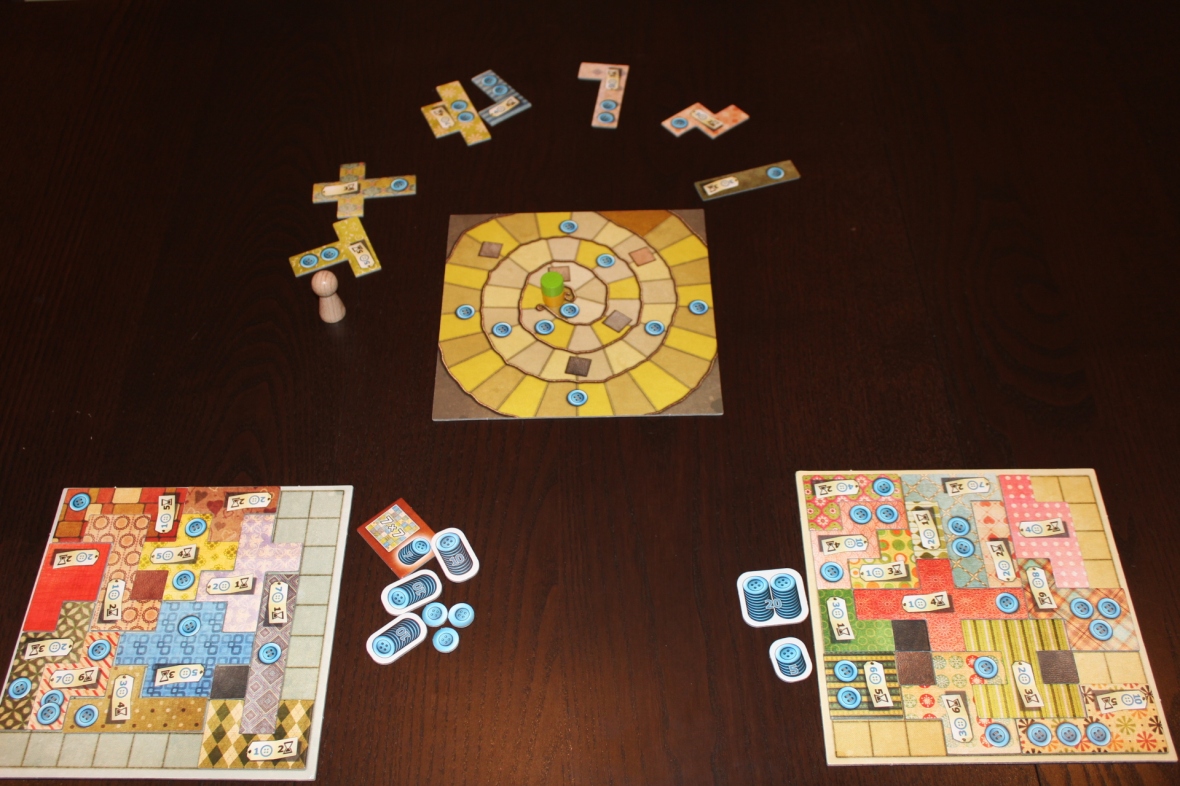For the inaugural post in my series of Game Breakdowns, I want to talk about the perineal /r/boardgames choice for “2p game to play with my girlfriend.” I’m speaking, of course, about Uwe Rosenberg’s Patchwork. It’s the perfect game to share with someone who only has a tangential interest in board games, or a “gateway gamer”.

Looking for more resources to help you on your board game design journey?
Here you go: no email required!
Like this writing style?
Check out my latest blog on marketing here.
There’s a lot of reasons this game tops charts as being the favorite to share with a “non-gamer”. It’s easy-to-learn and visually approachable. Patchwork also has a high thread-count of strategy sewn deep into its fabric. I am going to point out specific examples of things I like about Patchwork and use them to explain why I think it works so well as a gateway game.
First, a little bit about the game. It is a 2-player game that takes about 30 minutes once you know what you’re doing. The objective is to score the most points, which you do by collecting buttons. Each button is worth a point. You can use buttons to buy differently shaped pieces to cover up your board. You want to cover up as much of you board as possible since 2 points are deducted at the end of the game for each square you don’t fill. It’s actually pretty common to score negative in this game.
You intuitively understand a viable winning strategy in Patchwork.

The objective of Patchwork is to score the most points, but that’s kind of an abstract concept. When you see the game in action for the first time, you very viscerally understand that filling up your board is critical to a winning strategy. You start buying pieces and arranging them like a very slow game of Tetris.
Perhaps you don’t even pay attention to collecting buttons until the end. Point is, even a non-gamer can play Patchwork for the first time and feel like they are accomplishing something. That’s such an important feeling for a gateway game. Many games are very unforgiving until the third or fourth try.
It’s pretty and most people have never seen anything like it.

It’s hard to look at Patchwork and not find it charming. It’s a cute-looking game. Gateway games don’t have to be cute, but being bright, unique, and crystal clear helps a lot. There are board games that look like Excel spreadsheets, and that scares people away – as unfair as that might be to an otherwise well-designed game.
It’s short.
Gateway games don’t have to be short, but non-gamers, in my experience, tend to get fidgety after more than an hour of gameplay. Patchwork takes only about 30 minutes, so a non-gamer can dip their toe in the board game waters without committing a bunch of time.
It has depth on repeated plays, but the depth comes from simple mechanics.
Here’s the truly beautiful thing about Patchwork: it’s got hooks. Nuances start to reveal themselves in intuitive, but nonetheless complex and impressive ways, upon repeated plays. The “button income” gives you an impetus to choose certain pieces instead of others, even if they’re harder to fit on your board. There’s a trade-off between buying a piece and holding onto your buttons. You can even screw with your opponent and turn it into a savage take-that game by taking the piece they want to buy OR by accelerating the pace of the game.

The mechanics may be simple, but the relationships between them give the game life and longevity. It’s not Twilight Struggle. You don’t need an encyclopedic knowledge of the game’s minutae to hustle at it. You just need clever wits and a couple of run-throughs. Gateway gamers appreciate that.
Does anybody want to play Patchwork with me? It’s $20 on Amazon, if you’re interested.
Want to see where these gorgeous photos came from? Check out What’s Eric Playing?, a fantastic site run by Eric Yurko.





2 thoughts on “Patchwork: Making a Gateway Game”